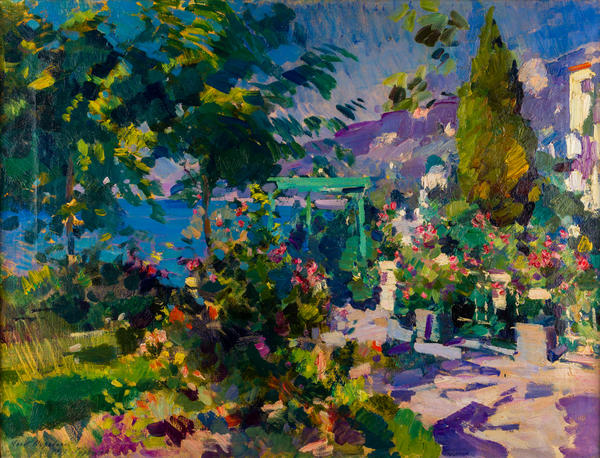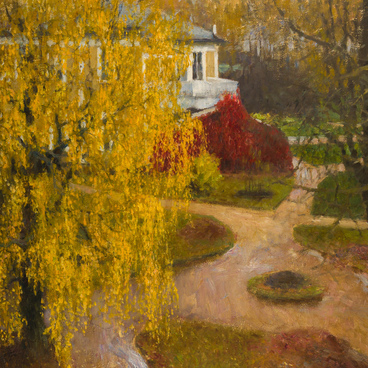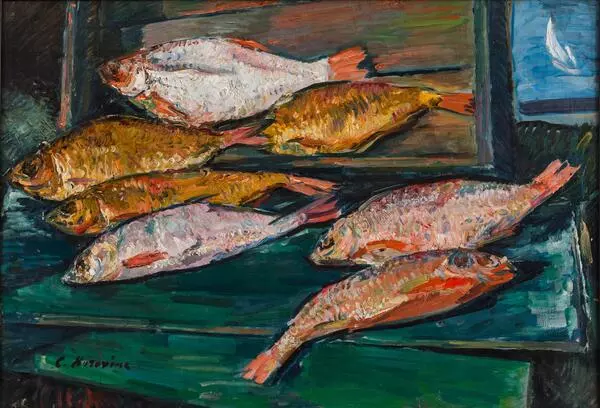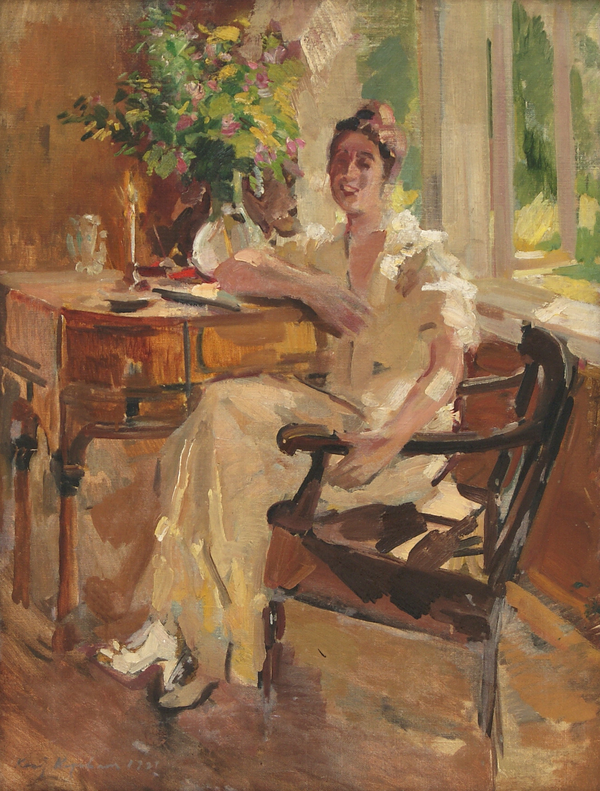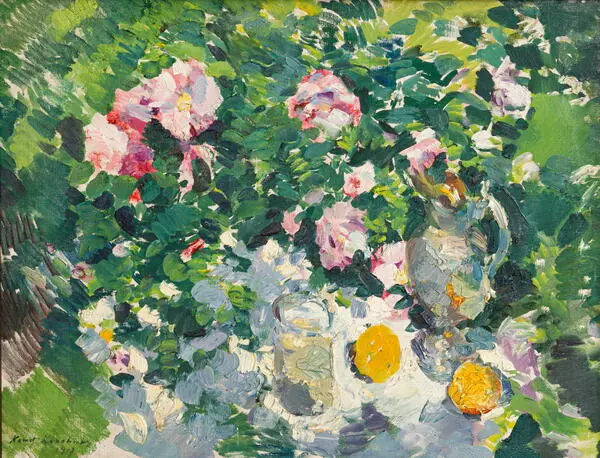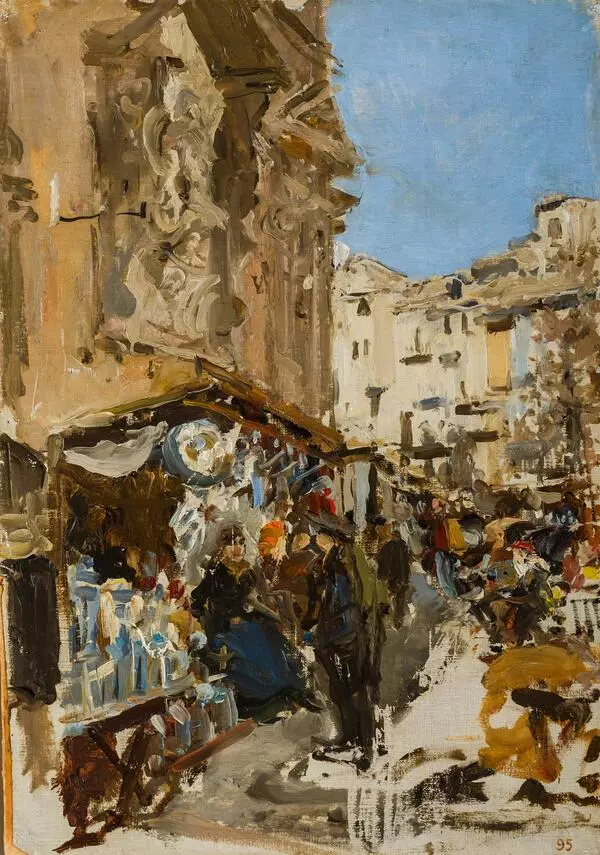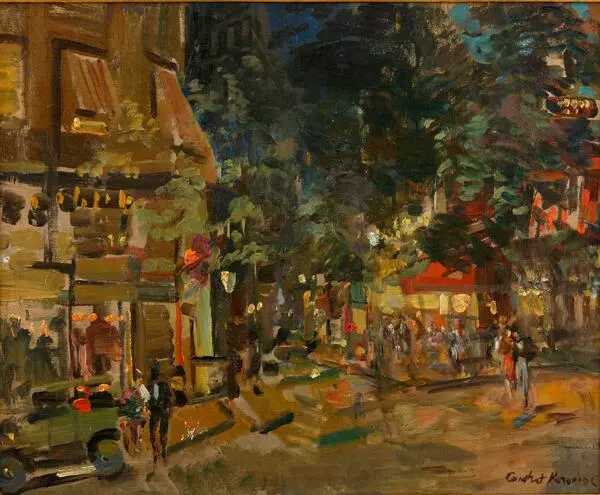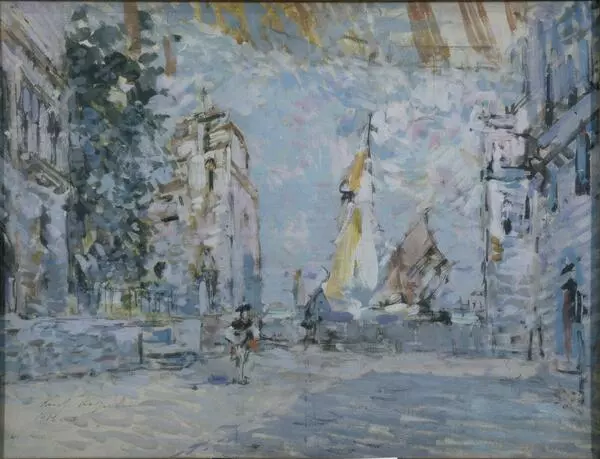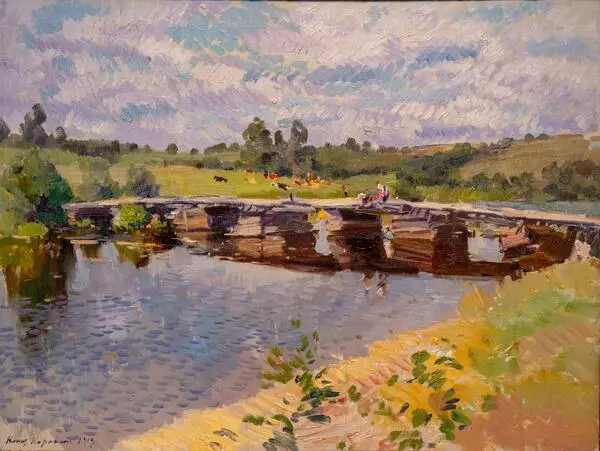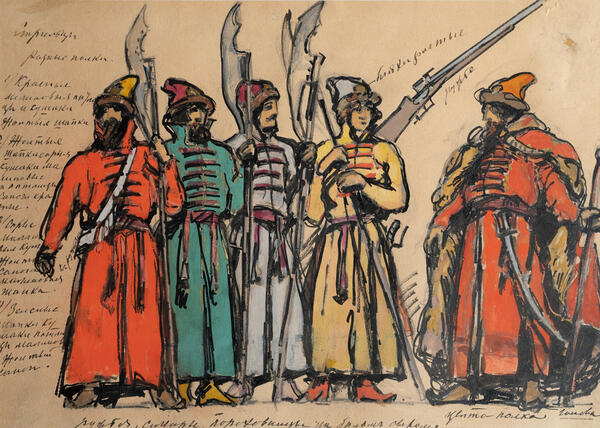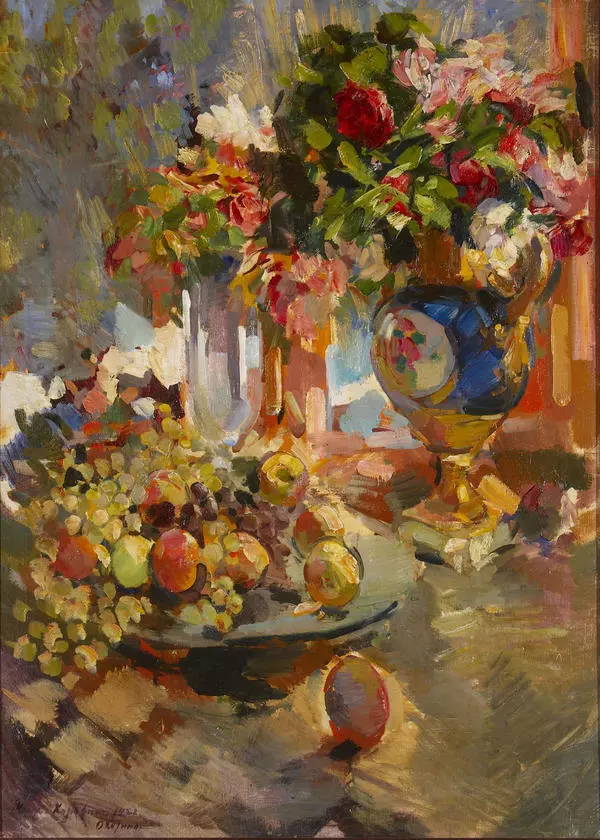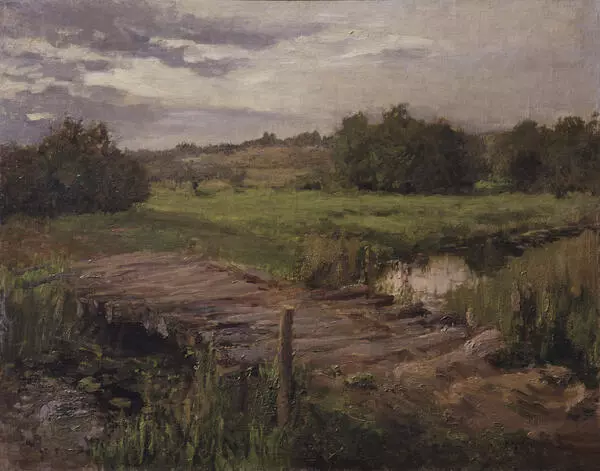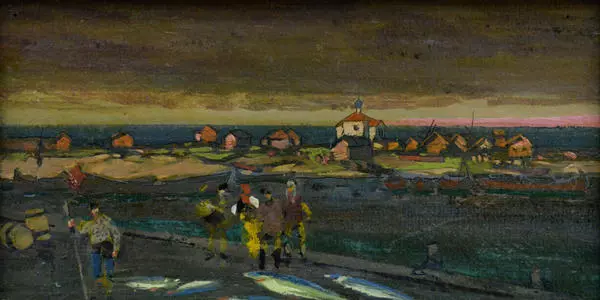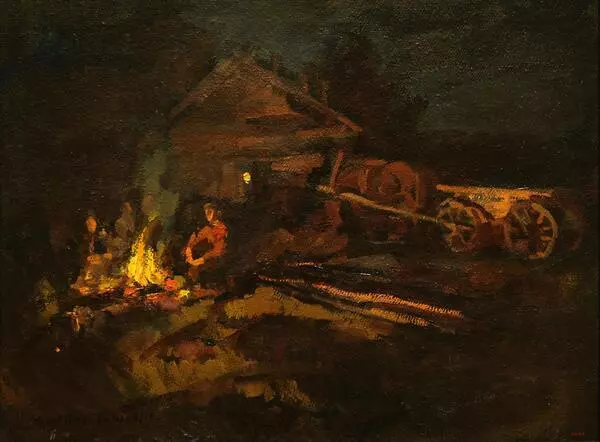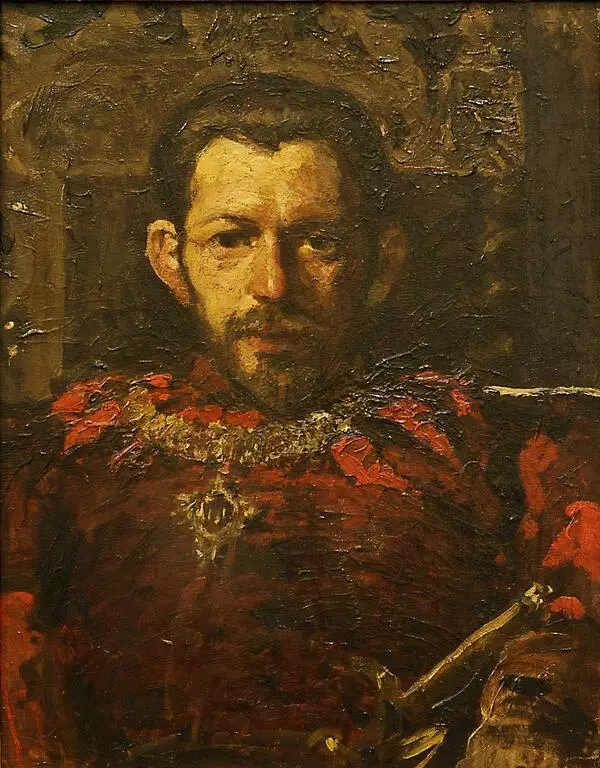Konstantin Alexeevich Korovin, a talented painter and theater artist, was born in a Moscow merchant family in 1861. He took to drawing in his childhood and at the age of 14 was admitted to one of the leading art schools in pre-revolutionary Russia — Moscow School of Arts, Sculpture and Architecture.
In 1890s, the artist made two trips to the north, where he painted A Harbor in Norway, Murmansk Coast, Arkhangelsk Port on Dvina and other landscapes. In the same period, Konstantin Alexeevich visited Paris several times and was fascinated by French impressionism. However, he did not copy the French and created his own national version of impressionism — Russian impressionism, that got the name Korovin’s impressionism in literature.
Konstantin Alexeevich lead a very active life in art: organized exhibitions, cooperated with stage directors, worked as costume and stage designer in many famous theater productions of the time, and during World War I even designed camouflage for the Russian army headquarters.
Crimean landscapes became an important theme in Korovin’s art after he built a country house on Gurzuf — a small village on the South Coast of Crimea. From 1910 to 1917, the artist spent a lot of time and worked productively in his Gurzuf house. He painted landscapes filled with sunlight and warmth, portrayed wide expanses of land covered in fragrant greenery and flowers.
The artist painted Crimea. Gurzuf in 1917 before his departure. After the October revolution he never came back to Gurzuf. The featured painting is a conceptual one for Russian impressionism. It is based on a rich spectrum of tones and shades and painted in wide free strokes. The principal difference of the painting from the works of French impressionists is the use of black color. Korovin’s impressionism was embodied in a hedonistic attitude to life. The artist was attracted by its festive and joyous side, when pleasure was perceived as the supreme good and the only value.
In 1922 the artist emigrated to France where he died in September 1939. His paintings are exhibited in many major Russian galleries, a large collection of paintings by Konstantin Alexeevich Korovin is featured in the Russian Museum in St. Petersburg.
In 1890s, the artist made two trips to the north, where he painted A Harbor in Norway, Murmansk Coast, Arkhangelsk Port on Dvina and other landscapes. In the same period, Konstantin Alexeevich visited Paris several times and was fascinated by French impressionism. However, he did not copy the French and created his own national version of impressionism — Russian impressionism, that got the name Korovin’s impressionism in literature.
Konstantin Alexeevich lead a very active life in art: organized exhibitions, cooperated with stage directors, worked as costume and stage designer in many famous theater productions of the time, and during World War I even designed camouflage for the Russian army headquarters.
Crimean landscapes became an important theme in Korovin’s art after he built a country house on Gurzuf — a small village on the South Coast of Crimea. From 1910 to 1917, the artist spent a lot of time and worked productively in his Gurzuf house. He painted landscapes filled with sunlight and warmth, portrayed wide expanses of land covered in fragrant greenery and flowers.
The artist painted Crimea. Gurzuf in 1917 before his departure. After the October revolution he never came back to Gurzuf. The featured painting is a conceptual one for Russian impressionism. It is based on a rich spectrum of tones and shades and painted in wide free strokes. The principal difference of the painting from the works of French impressionists is the use of black color. Korovin’s impressionism was embodied in a hedonistic attitude to life. The artist was attracted by its festive and joyous side, when pleasure was perceived as the supreme good and the only value.
In 1922 the artist emigrated to France where he died in September 1939. His paintings are exhibited in many major Russian galleries, a large collection of paintings by Konstantin Alexeevich Korovin is featured in the Russian Museum in St. Petersburg.

